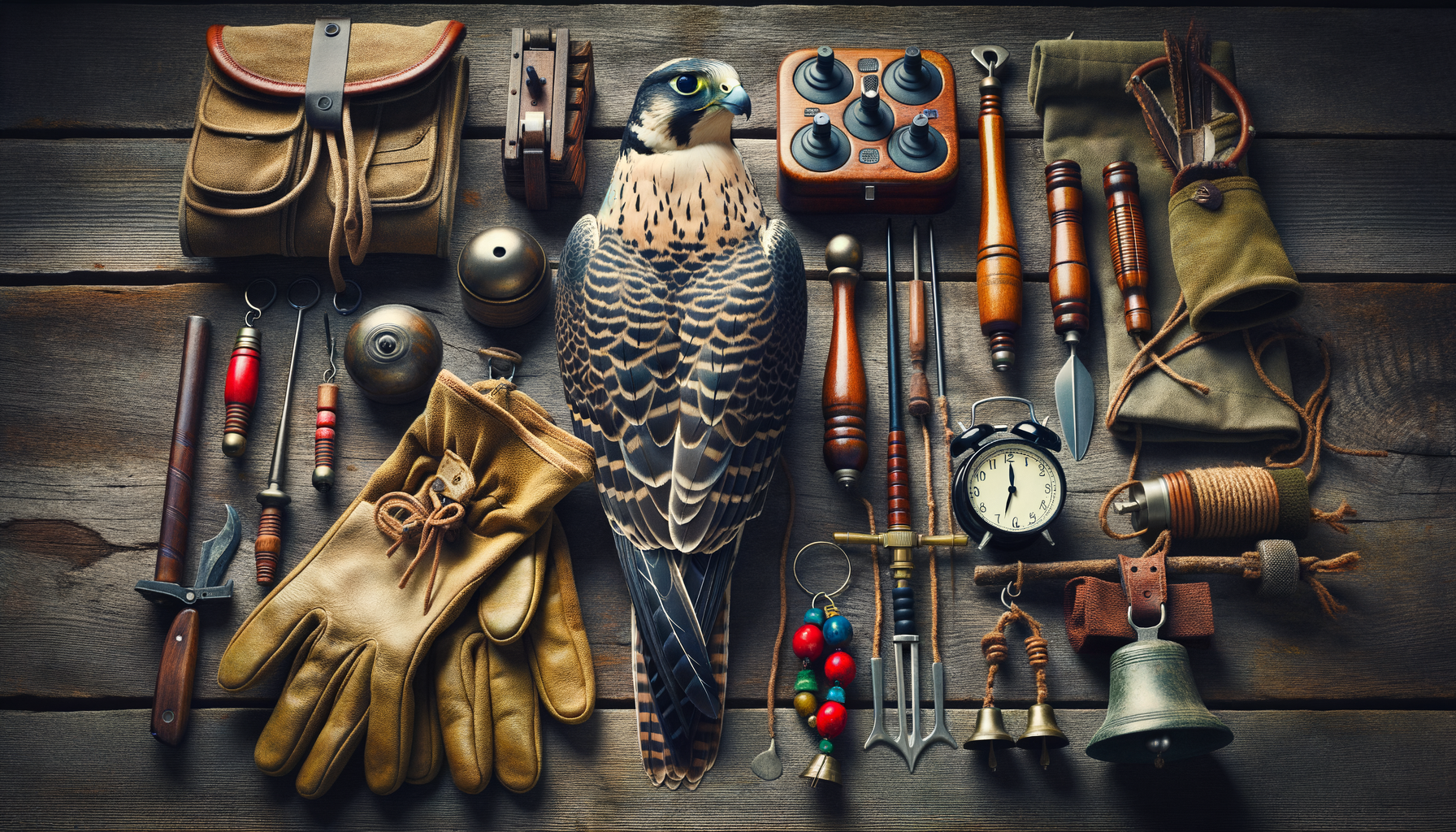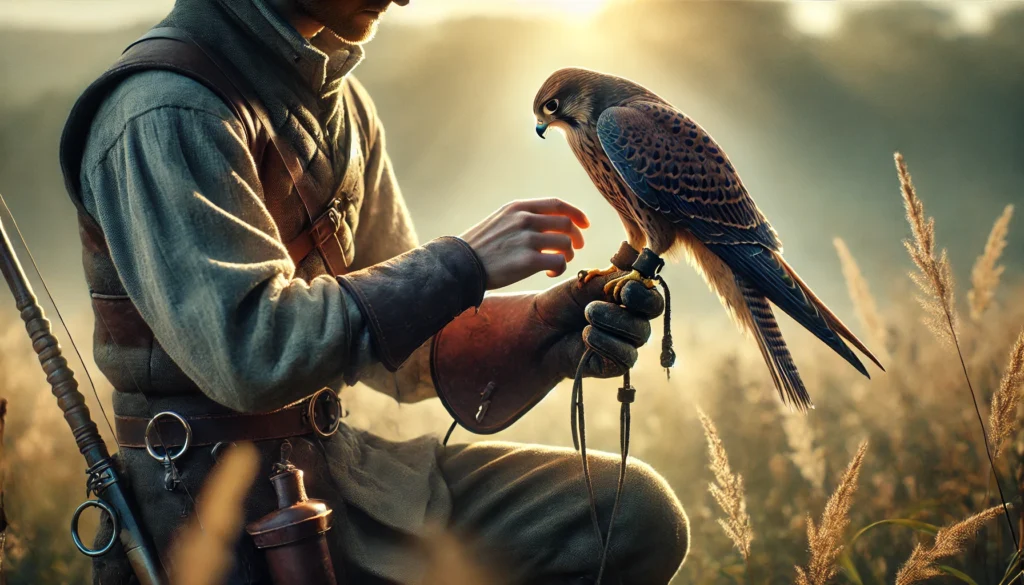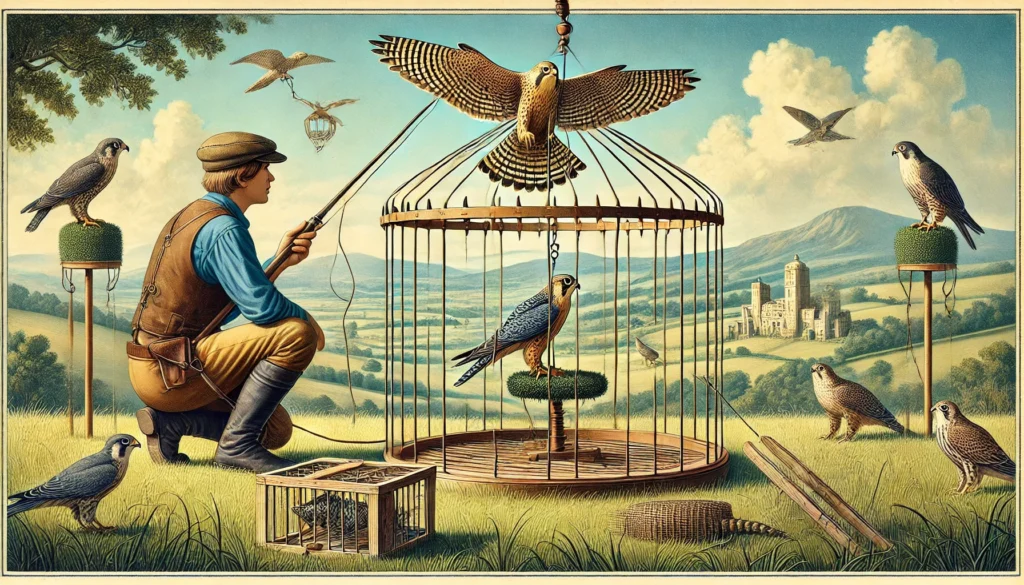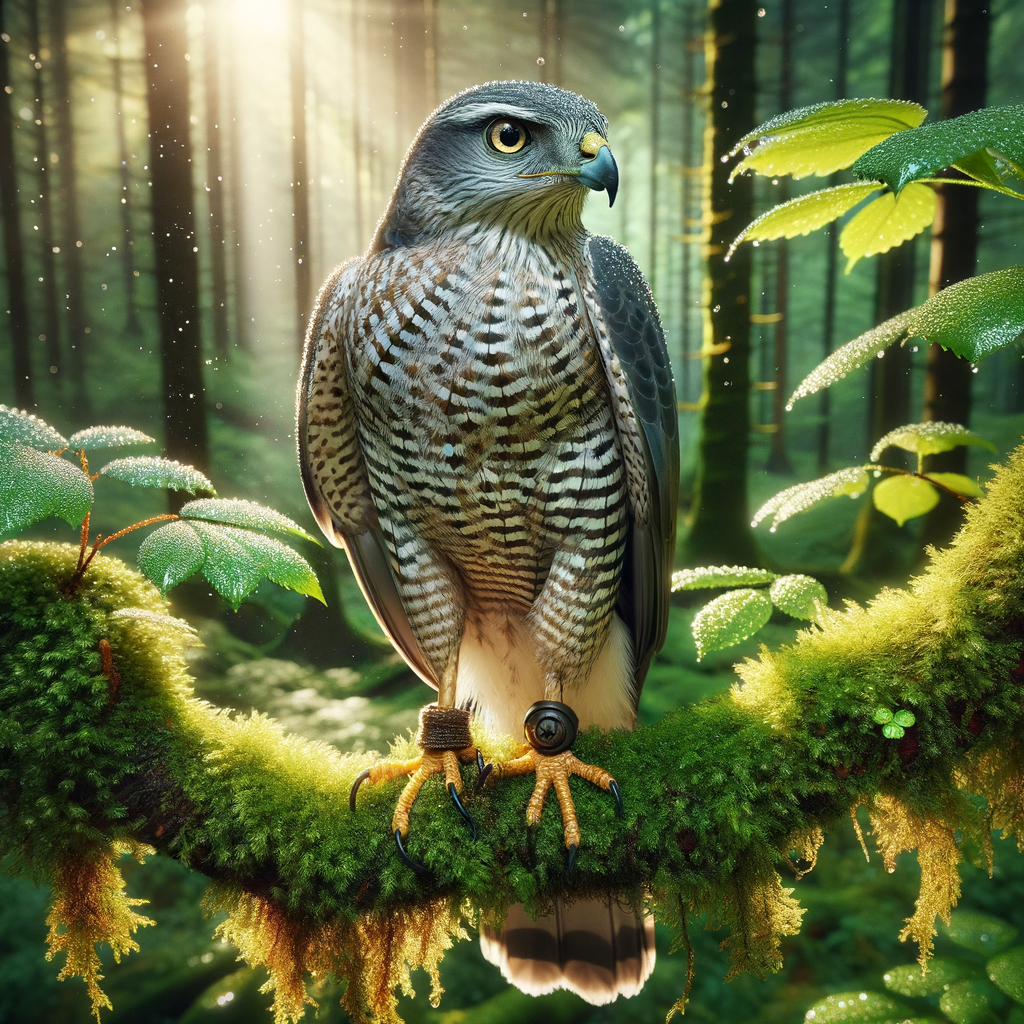Essential Falconry Kit for Beginners
- Gloves: Protect your hand and arm while handling birds.
- Hoods: Keep your falcon calm and focused; important for training.
- Jesses: Secure the bird to your glove or perch for safety.
- Perches: Provide a safe place for your falcon to rest and observe.
- Leashes: Helps in controlling your bird during flights.
- Lure: Used to train and exercise your falcon, often with treats attached.
- Telemetry: Track your bird’s location using modern technology for safety.
- Bath Pans: Ensure your falcon has access to clean water for drinking and bathing.
- Scales: Monitor your falcon’s health by regularly checking its weight.
- First-Aid Kit: Be prepared for any minor injuries or emergencies.
- Training Whistle: Use distinct sounds to communicate with your falcon.
- Field Knife: Versatile tool for various tasks during outings.
Remember, having the right equipment helps you and your feathered friend enjoy a safe and fulfilling falconry experience!
Essential Falconry Kit: Your Path to a Soaring Adventure
Imagine, for a moment, you’re in the rolling green hills of Ireland. Now, think about embarking on a thrilling journey through those hills without a trusty walking stick or a good pair of boots. Sounds tricky, right? The journey wouldn’t just be challenging but also less enjoyable. Similarly, diving into the world of falconry without the right gear is like setting off on that Irish adventure unprepared.
Here at Learn Falconry, we are passionate about equipping you with the knowledge and tools to ensure your falconry experience is nothing short of magical. In this article, we’re going to walk you through the essential falconry kit you’ll need. From gloves to lures, every piece of equipment plays a crucial role in making sure you and your feathered friend are ready for anything nature throws your way.
Stick with us as we break down each item, showing you how they work together to set you up for success. Trust us, you’ll want to know why each part of the kit is as important as a good raincoat in an Irish downpour! Happy reading and let’s get ready for an adventure that takes you to the skies.
Essential Falconry Kit: Everything You Need to Get Started
Are you excited about diving into the world of falconry? As thrilling as it sounds, starting your journey requires the right essential falconry equipment to ensure both your and your bird’s safety and success. This guide will walk you through everything you need in your falconry starter kit so you can embark on this incredible adventure with confidence.
What is an Essential Falconry Kit?
An essential falconry kit includes the basic tools and gear necessary to train, handle, and care for your falcon. Without the right equipment, it becomes challenging to practice falconry safely and effectively. Here, we break down the basic falconry gear you’ll need at the beginning of your falconry journey.
The Must-Have Falconry Gear
- Falconry Gloves: One of the most important pieces of equipment, falconry gloves protect your hand and arm from the bird’s sharp talons. They are typically made from sturdy leather. You can learn more about Falconry Gloves here.
- Jesses and Leashes: These leather straps are essential for controlling your bird when it is on your glove. Jesses are fastened to the legs of the falcon, and the leash is attached momentarily during training or handling. For more details, explore our page on Jesses and Leashes.
- Hoods: Falcons wear hoods to keep them calm by limiting their vision. This is particularly useful during training or transportation. Discover the different Types of Hoods.
- Bells and Telemetry: Attaching small bells to your falcon helps you locate them by sound. Telemetry equipment uses radio signals to track your bird over larger distances. Read more about Bells and Telemetry.
- Perches and Stands: Your falcon needs a safe place to rest when it is not flying or training. Various types of perches provide this resting spot. Learn about the different kinds of Perches and Stands.
- Scales and Weighing Equipment: Monitoring the weight of your bird is crucial for its health and training. Scales and Weighing Equipment help ensure your falcon is at its optimal flying weight.
- Lures: These are used during training sessions to simulate hunting. Lures help in teaching your bird to return to you on command. Find out more about Falconry Lures.
- Mews and Housing: Proper housing, or “mews,” is essential for keeping your falcon safe and comfortable when it is not flying. Refer to our information on Mews and Housing for insights.
- Bathing and Watering Equipment: Falcons need regular baths to keep their feathers in good condition. Proper watering equipment ensures they stay hydrated. Our page on Bathing and Watering Equipment provides further details.
Preparing for Your Falconry Adventure
When you are fully equipped with your falconry starter kit, you’ll be set to start training and bonding with your bird. But it’s also important to gain proper knowledge and understand the responsibilities that come with falconry. Whether it’s learning about the History of Falconry, understanding Falconry Techniques, or knowing the Legal Aspects of Falconry, our resources at Learn Falconry are here to guide you.
Additionally, remember that taking care of your falcon also means attending to its health and nutrition needs. Explore our tips on Falconry Health and Nutrition to keep your bird in top condition.
Dive Deeper into Falconry
As you set up your essential falconry kit, continue to enhance your knowledge by exploring our various resources:
This journey is as rewarding as it is challenging, and having the right equipment and knowledge is key to your success. Happy Falconing!
For more in-depth guides and resources, visit Learn Falconry at LearnFalconry.com. We’re committed to supporting you on your path to becoming an accomplished falconer.
Essential Falconry Kit: Tools for Success in 2024
Hoods: Calming and Transporting Birds
Hoods are essential in falconry to keep the bird calm while handling and transporting. These snug-fitting covers go around the bird’s head and eyes, ensuring safety and comfort. They are particularly important when moving birds from one location to another or when introducing them to new environments.
Jesses: Effective Control with Leather Straps
Jesses are leather straps attached to the bird’s legs, allowing the falconer to handle the bird safely. There are multiple types of jesses for different purposes:
- Flying Jesses: Used when the bird is out hunting.
- Perching Jesses: Used when the bird is resting.
Gloves: Protection and Comfort for Falconers
Falconry gloves protect the falconer’s hands. They usually come with a pouch for the bird’s leg and a strap to secure it. Common materials include:
- Deer or Cowhide: Short cuff single-thick gloves.
- Elk Leather: Full-cuff gloves providing extra protection and comfort.
Anklets: Ensuring Bird Comfort and Safety
Anklets are leather straps that wrap around the bird’s legs. They are made to prevent the bird from getting tangled or caught on objects, ensuring its safety during flights and while perched.
Bewits: For Easy Identification and Tracking
Bewits are small leather strips used to attach bells to the bird’s legs. These bells help identify and track the bird’s location.
Swivels and Leashes: Smooth and Secure Handling
Swivels are vital for connecting the leash to the jess, providing a smooth handling experience. Leashes are used to secure the bird when necessary, preventing it from flying away.
GPS Trackers: Ensuring Bird Safety and Monitoring Flight Patterns
Modern falconry employs GPS trackers for detailed information on the bird’s location and flight patterns. These devices ensure the bird’s safety and provide a wealth of data on its movements.
| Type of Gear | Purpose | Example Material |
|---|---|---|
| Hoods | Calm and transport birds | Leather |
| Jesses | Secure the bird’s legs for control | Leather |
| Gloves | Protect the falconer’s hands | Deer, cowhide, elk leather |
| Anklets | Secure and protect bird’s legs | Leather |
| Bewits | Attach bells for identification and tracking | Leather |
| Swivels | Connect leash to jess for safe handling | Metal, leather |
| Leashes | Secure the bird | Various materials |
| GPS Trackers | Track the bird’s location and monitor flight | Electronic devices |
Mews and Perches: Ideal Housing and Resting Solutions
- Mews: Special enclosures designed to house falconry birds. They should be well-ventilated, appropriately lit, and equipped with suitable perches.
- Perches: Different perches cater to different bird species. They offer a place for birds to rest and exercise.
| Housing Component | Description |
|---|---|
| Mews | Enclosures with proper ventilation, lighting, and perches |
| Perches | Designed perches for various species, ensuring comfort and exercise opportunities |
Flooring: Providing Comfort and Support
The flooring in mews should support and provide comfort for the bird’s feet and talons. Options include:
- Wood Shavings
- Natural Flooring
- Pea Gravel
- Concrete
Comprehensive Gear List
A typical falconry gear list includes:
- Hoods
- Jesses
- Gloves
- Anklets
- Bewits
- Swivels
- Leashes
- GPS Trackers
- Mews
- Perches
- Flooring (wood shavings, natural flooring, pea gravel, concrete)
- Telemetry and Lures
- Loop Leashes and Pliers
| Item | Use |
|---|---|
| Telemetry and Lures | Tracking and training |
| Loop Leashes and Pliers | Secure handling and management |
Books and Guides: Essential Resources
Falconers benefit from a range of educational materials:
- Falconry Manuals and Study Guides
- Log Books for Recording Activities
- Books on Techniques and Bird Care
Estimated Costs
Falconry can be a significant investment. Costs can range:
- Initial Setup: $1,500 – $2,500
- Basic Kits: $250 – $1,000
- Deluxe Kits: Up to $5,000
Essential Falconry Kit: Key Takeaways
Understanding the essential gear for falconry is crucial whether you’re a beginner or an experienced falconer. In 2024, the must-have items include hoods, jesses, gloves, anklets, bewits, swivels, leashes, transmitters, GPS trackers, mews, perches, and appropriate flooring. These tools ensure the safety and comfort of both the bird and the falconer throughout their journey together.
Starter kits for falconry are available in basic and deluxe versions, catering to different levels of experience and budget. Basic kits typically include essential items for immediate use, while deluxe kits provide more advanced tools for a comprehensive experience. The cost of these kits can vary significantly, with basic ones being more affordable and deluxe ones offering a higher price point.
For those interested in falconry, it’s important to note that obtaining a falconry license is a necessary step, with specific requirements varying by location. Additionally, initial costs for getting started in falconry can range from $1,500 to $2,500, depending on the quality of the equipment and housing for the birds.
In essence, being well-equipped with the right gear and knowledge is key to enjoying a safe and rewarding falconry experience. Whether you’re starting out or looking to enhance your setup, investing in quality falconry equipment is a worthy endeavor for any aspiring falconer.



